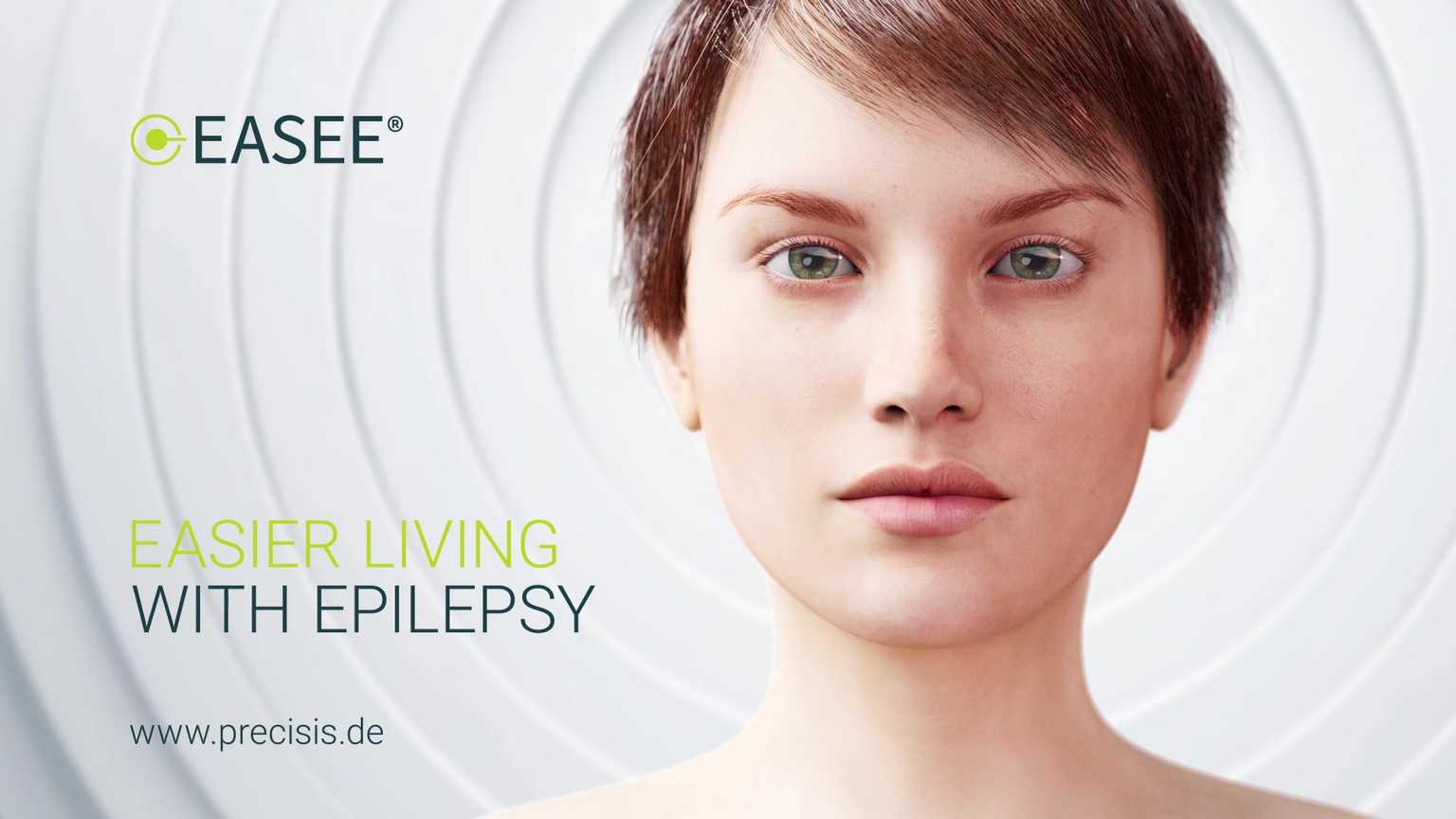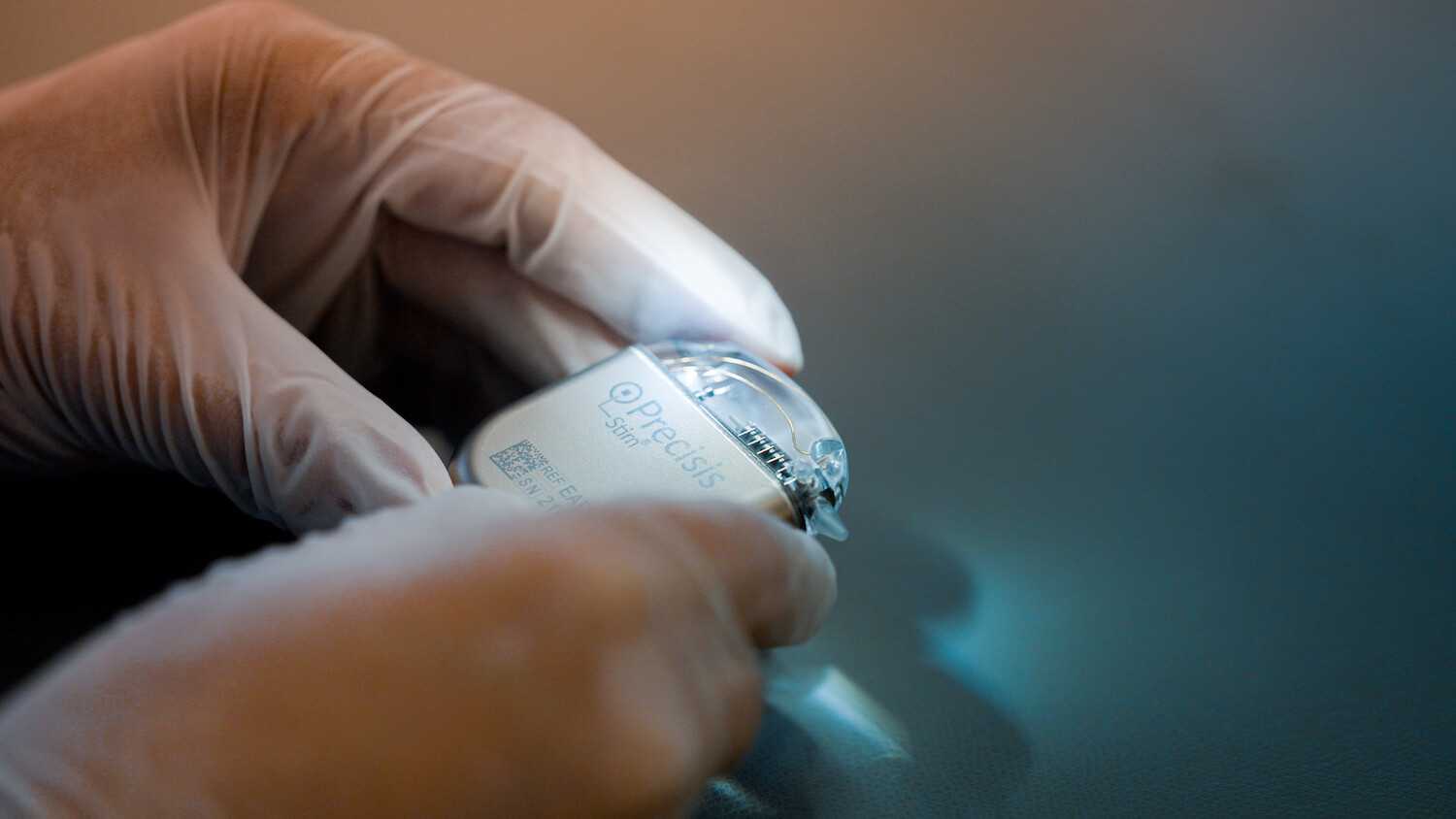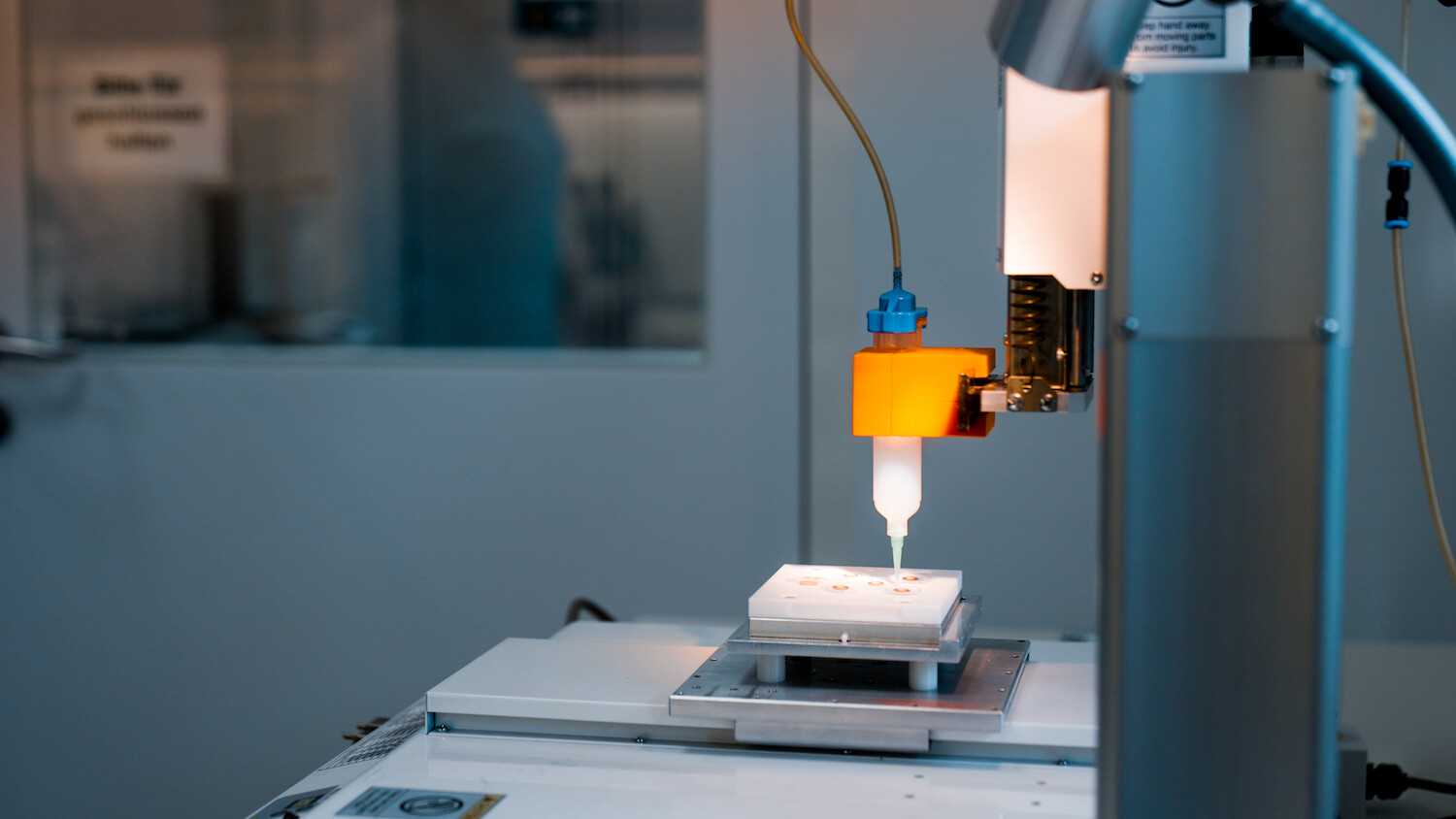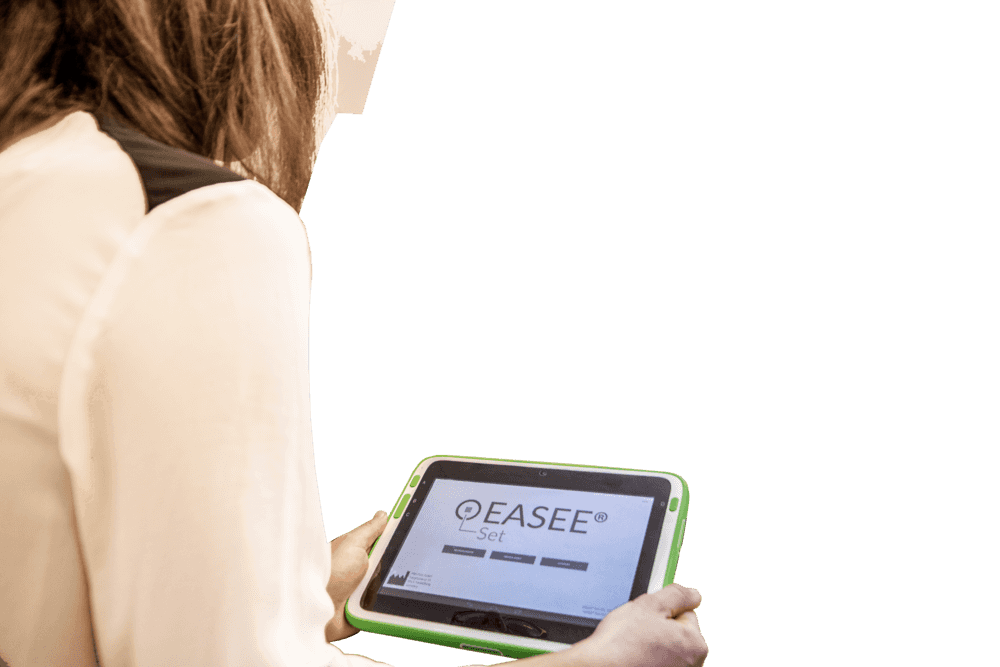EASEE® Technological uniqueness and innovation
- Electrode shape
- DLS (DC-like cathodal Stimulation) for neuromodulation via neuroplasticity
- HFS (High-Frequency Stimulation) for seizure interruption

EASEE® Placement
EASEE® sends electrical signals to the area in the brain where epileptic seizures originate. It stabilizes the brain without touching it.
EASEE®: is located beneath the skin and acts directly at the focal point.
In a short procedure under general anesthesia, the ultra-thin electrode array is subgaleally implanted. The electrode cable is tunneled to the chest area, where it is connected to the pulse generator, which is also subcutaneously implanted.






Ultra-thin implantable pseudo-Laplacian electrode
A so-called Laplace electrode allows the creation of fields and currents perpendicular to the electrodes plane. In the EASEE® system, the outer ring-shaped electrode is replaced by four individual electrodes to adapt the alignment of the resulting electric field to spatially varying resistances. This allows significant currents to affect tissue on the brain's surface and in deeper structures, similar to more invasive procedures.


Implantable pulse generator (IPG)
Strong stimulation paradigms.
Our IPG is complex in design. The groundbreaking innovation is based on the combination of two different stimulation patterns within an individualized design that includes a unique safety mechanism. EASEE® has been proven to be an effective treatment option through individualized stimulation.



UX & UI for a user-centred therapy
Neurologists and patients can adjust stimulation paradigms from outside
The patient-individual configuration of stimulation parameters have a strong impact on therapy success. Additionally, implant-side data can be used for additional diagnostic purposes. The patient-controlled stimulation (Access) is crucial for a patient-centred therapy.